space
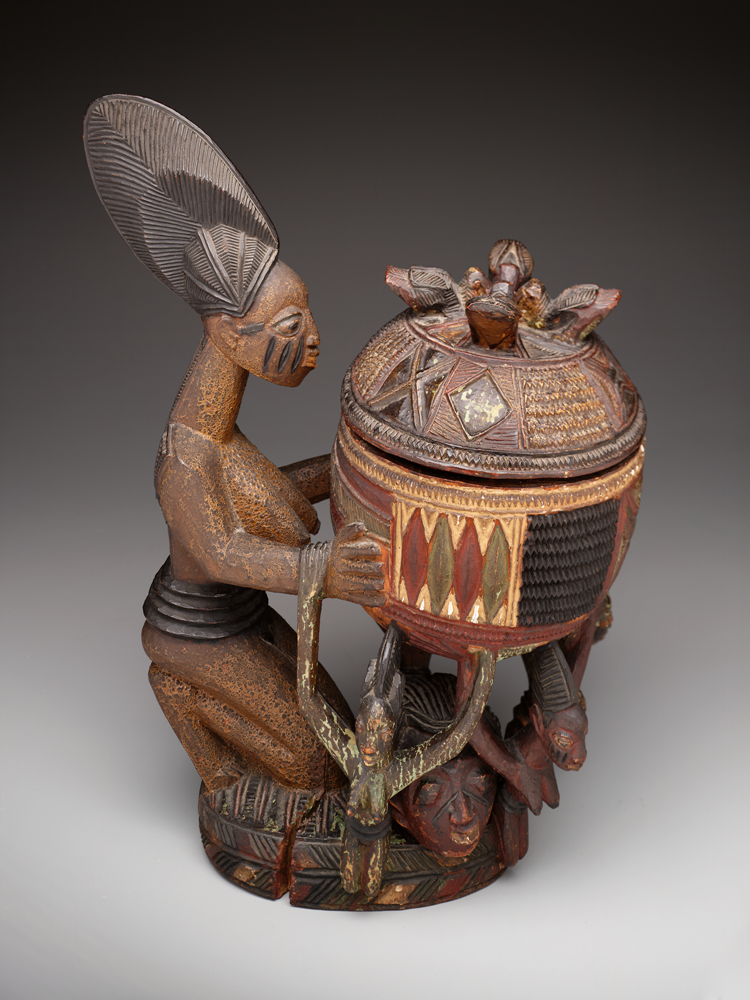
Kneeling female figure with bowl (olumeye), Olowe of Ise, Yoruba peoples, c. 1910 to c. 1918, Effon-Alaiye, Ekiti region,Nigeria Dallas Museum of Art, The Eugene and Margaret McDermott Art Fund, Inc.
Another great instance of gift bearing is the Relief of a procession of offering bearers from the tomb of Ny-Ank-Nesut. This limestone relief was a part of Ny-Ank-Nesut’s tomb and it depicts a group of servants bringing various items for their master to have in the Afterlife. Ancient Egyptians believed that once they died, they would have the opportunity to pass into an Underworld, which was something like a perfect version of the life that they had lived on earth. So, of course, one would need to have all of the necessities buried with them. These men are offering items for a wonderful feast such as bread, cakes, geese, birds, papyrus sheaves, bowls of lotus flowers, a hedgehog in a cage (not sure if this was given as food or a companion), and vessels for drink offerings. Sounds like the makings of a great party to me.

Relief of a procession of offering bearers from the tomb of Ny-Ank-Nesut,Old Kingdom, 2575-2134 BC, Saqqara, Egypt, Dallas Museum of Art, Munger Fund
An illustration of a thank-you gift can be found in Takenouchi no Sukune Meets the Dragon King of the Sea. This sculpture depicts the warrior Takenouchi, a popular hero in Japanese folklore, who dreamed that he was called to destroy a terrible sea monster that was ravaging the waters and everything that lived in it. Once Takenouchi defeated the monster, the Dragon King of the Sea Ryujin, emerged from the deep and presented a precious jewel in recognition of the valiant mission. This particular gift was not only beautiful, but it also promised Takenouchi control of the seas.
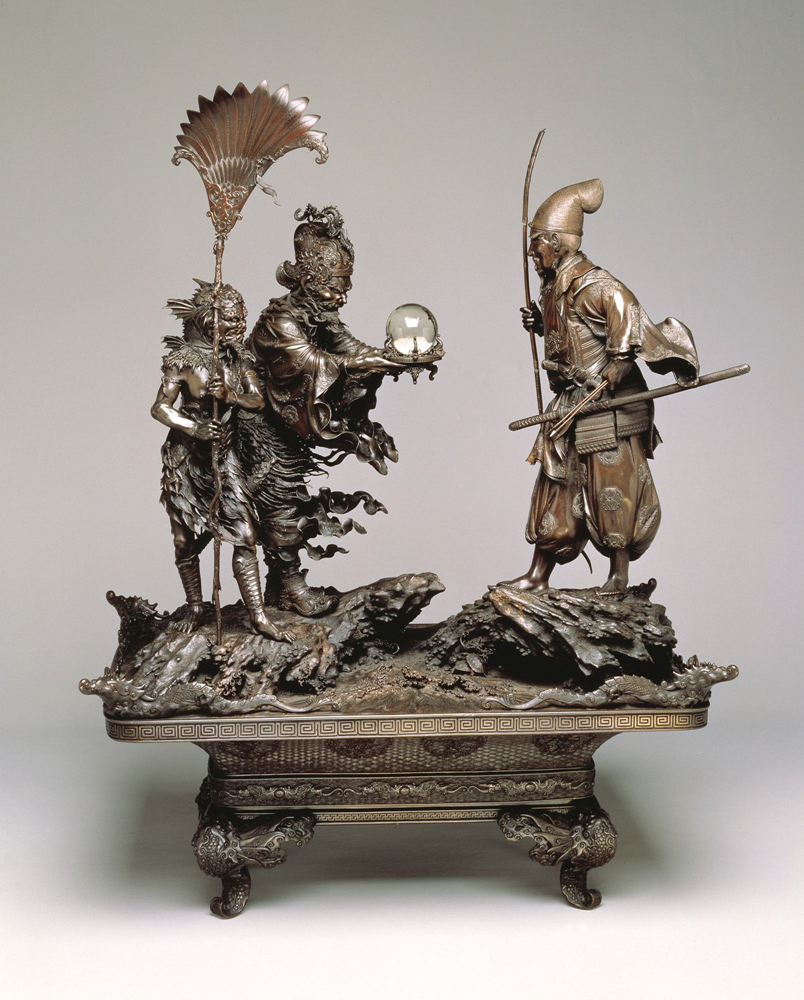
Takenouchi no Sukune Meets the Dragon King of the Sea, Meiji period (1868-1912), 1875-1879, Japan, Dallas Museum of Art, Foundation for the Arts Collection, The John R. Young Collection, gift of M. Frances and John R. Young
While gift giving is supposed to be selfless, we sometimes come bearing gifts knowing full well that we are going to get something in return. That is the case in this mosaic of Achilles at the Court of King Lycomedes. The legend says that young Achilles was sent by his mother to live at the court of Lycomedes. He was disguised as a girl in order to avoid being killed as a Greek soldier and leaving the prophesy of his death unfulfilled. Unfortunately, Odysseus, the powerful Greek leader, had other plans. He concealed himself as a peddler and brought a bag of trinkets as gifts for the girls of the court. He had hidden weapons in the bottom of the bag so that when Achilles grabbed them, he revealed himself as a man. He was swept away to fight in the war and ultimately killed. A dangerous gift, indeed.
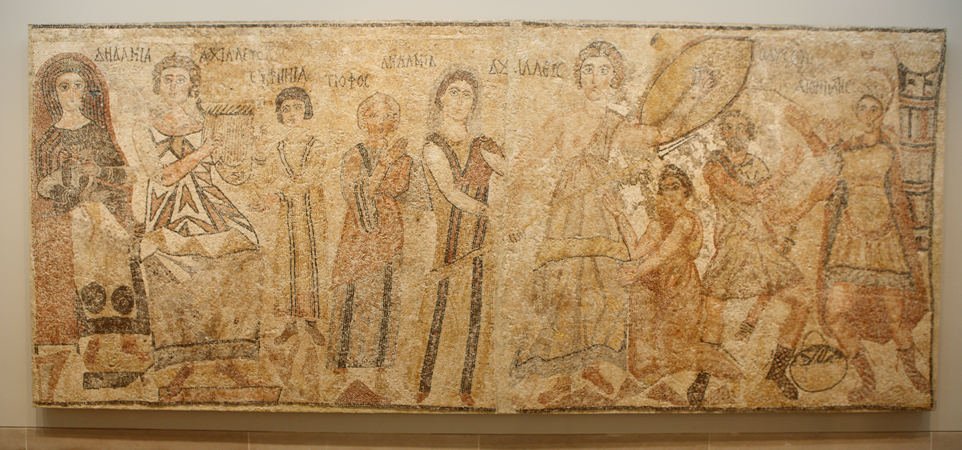
Achilles at the Court of King Lycomedes, Late Roman; Byzantine, 4th to 5th century A.D., Anonymous lender
Sometimes the items that hold the gifts are just as beautiful as the gifts themselves. Two examples of this are the Hexagonal dish for offerings from Indonesia and the ancient Greek Red-figure patera with Atlas handle. Both of these objects were made to hold offerings. The patera was specifically made to hold liquid offerings to the deceased, and has an image of a woman holding a similar object in her hand. These lovely works of art remind us that presentation is everything.
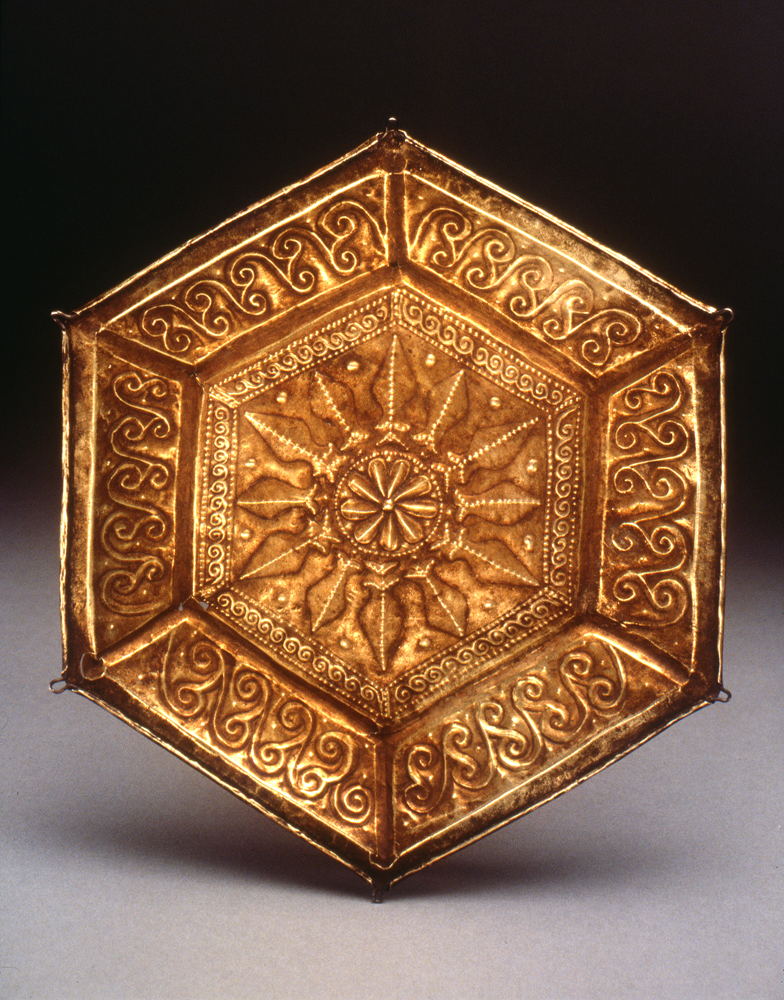
Hexagonal dish for offerings, 19th Century, Southeast Moluccas, Indonesia, Dallas Museum of Art, gift of The Nasher Foundation in honor of Patsy R. and Raymond D. Nasher
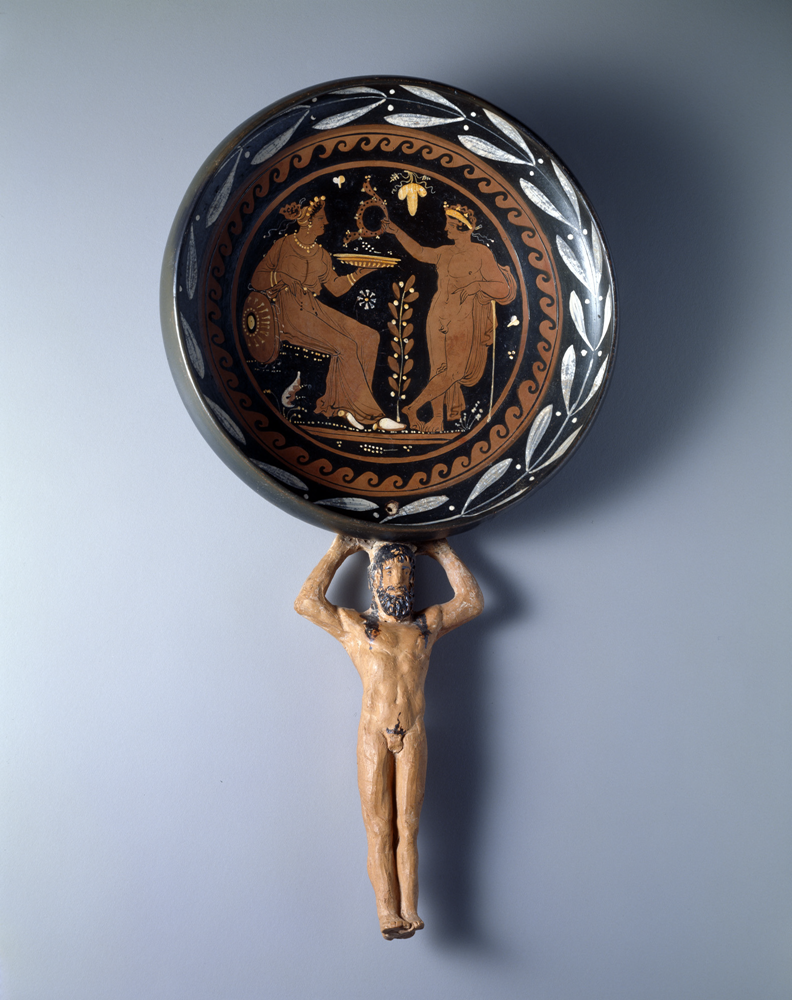
Red-figure patera with Atlas handle, Attributed to the Painter of Louvre, Greek or South Italian; Apulian, last third of4th century B.C., Dallas Museum of Art, gift of the Junior Associates
Remember that it is always better to give than to receive. Enjoy the gift-giving season!
McDermott Intern for Gallery Teaching